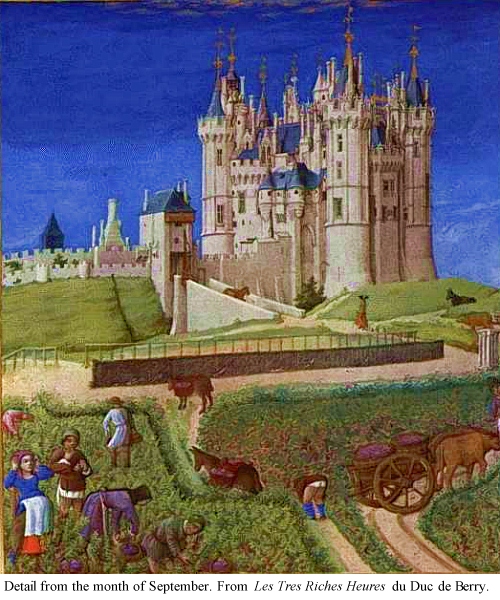End of Europe's Middle Ages

This description of a manor house at Chingford, Essex in England was recorded in a document for the Chapter of St. Paul's Cathedral when it was granted to Robert Le Moyne in 1265.
He received also a sufficient and handsome hall well ceiled with oak. On the western side is a worthy bed, on the ground, a stone chimney, a wardrobe and a certain other small chamber; at the eastern end is a pantry and a buttery. Between the hall and the chapel is a sideroom. There is a decent chapel covered with tiles, a portable altar, and a small cross. In the hall are four tables on trestles. There are likewise a good kitchen covered with tiles, with a furnace and ovens, one large, the other small, for cakes, two tables, and alongside the kitchen a small house for baking. Also a new granary covered with oak shingles, and a building in which the dairy is contained, though it is divided. Likewise a chamber suited for clergymen and a necessary chamber. Also a hen-house. These are within the inner gate.
Likewise outside of that gate are an old house for the servants, a good table, long and divided, and to the east of the principle building, beyond the smaller stable, a solar for the use of the servants. Also a building in which is contained a bed, also two barns, one for wheat and one for oats. These buildings are enclosed with a moat, a wall, and a hedge. Also beyond the middle gate is a good barn, and a stable of cows, and another for oxen, these old and ruinous. Also beyond the outer gate is a pigstye.
From J.H. Robinson, trans., University of Pennsylvania Translations and Reprints (1897) in Middle Ages Volume I: p283-284.
 |
Return to Feudal Institutions |
The End of Europe's Middle Ages / Applied History Research Group / University of Calgary
Copyright © 1997, The Applied History Research Group